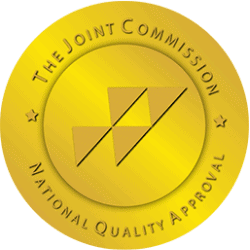It’s important to understand what secondary trauma means before we dive into the science behind it. Secondary trauma happens because our brains do not know how to process traumatic events. It’s not uncommon for people to feel guilty after witnessing someone else’s trauma.
For example, if you see someone being attacked, you might feel angry at the attacker for hurting them. Or if you witness someone being abused, you may feel sad for the victim. Here’s what you need to know about secondary trauma.
What Causes Secondary Trauma?
Secondary trauma is the emotional distress experienced by people who hear about the trauma suffered by others or witness it. Children suffer from this when they hear about the trauma of their parents, siblings, or friends. Therapists, social workers, and other helping professionals must be aware of how hearing about the trauma of others affects them.
Secondary trauma is also a common occupational hazard for those who work with traumatized children. This includes teachers, doctors, social workers, police officers, firefighters, clergy, psychologists, counselors, and others. These people often develop symptoms of post-traumatic stress disorder (PTSD) after working with traumatized children or adults. Some of these symptoms include nightmares, flashbacks, insomnia, irritability, anger outbursts, depression, anxiety, substance abuse, eating disorders, and other emotional problems.
There are many factors that contribute to this type of trauma. One of the most common causes is witnessing violence. It may not seem like it at first, but if you’ve witnessed domestic violence, child abuse, or sexual assault, you might feel guilty or ashamed. You might also feel angry towards yourself for being unable to protect them from harm.
In his book, van der Kolk describes secondary trauma as “the emotional response to another person’s suffering.” He says it happens when someone witnesses violence, abuse, or death, or experiences any kind of traumatic event. It can happen to anyone — from family members to strangers.
Signs and Symptoms
Secondary trauma affects your health in several ways. When you witness someone else’s pain, it can cause you to develop post-traumatic stress disorder (PTSD). PTSD is an anxiety disorder that occurs after experiencing a terrifying event. People with PTSD often have difficulty sleeping, avoid certain places, and feel anxious all the time.
Secondary trauma can also make you more vulnerable to other mental illnesses such as major depressive disorder. Research shows that people who have been exposed to trauma are twice as likely to develop depression than those who haven’t. They’re also more likely to be suicidal.
Secondary trauma patients exhibit a variety of signs and symptoms. Once you understand these symptoms and what they are, you’ll have a better idea of how to minimize the effect. These symptoms include:
- Flashbacks
- Nightmares
- Panic attacks
- Dissociation
- Avoidance behaviors
- Hypervigilance
- Issues with trust
- Feelings of numbness and detachment
How to Minimize the Effects of Secondary Trauma
To minimize the impact of secondary trauma, it’s important to understand what it is and why it happens. It’s not uncommon for people to feel guilty after witnessing someone else’s pain or tragedy. It’s also common for people to experience flashbacks or nightmares related to traumatic events. If this happens, it’s normal to feel upset and anxious. In fact, many people find that they feel better if they talk about their reactions.
It’s also important to remember that everyone feels sad, angry, frightened, and confused following a traumatic event. When we feel overwhelmed by our own emotions, it’s easy to judge ourselves for having such negative feelings. But we shouldn’t blame ourselves for experiencing these natural responses. Instead, we should try to accept them.
We can also help prevent secondary trauma by learning more about trauma. For example, we can learn about PTSD and its symptoms. We can also learn about ways to cope with trauma. Coping skills can help us deal with upsetting thoughts and memories. Learning coping strategies can reduce the likelihood of developing PTSD. Additionally, we can learn about how to support others who have been through trauma. By supporting others, we can help them heal emotionally and physically. We can also provide them with opportunities to share their experiences so that they can process their feelings.
Is There Treatment?
Yes! Cognitive-behavioral therapy (CBT) has been shown to reduce secondary trauma in survivors of traumatic events. It involves identifying negative thoughts and behaviors and replacing them with positive ones. CBT helps people develop coping skills and problem-solving abilities so they don’t fall back into old habits. It also teaches them ways to manage upsetting memories and emotions.
Other treatments for secondary trauma include mindfulness training, EMDR, and hypnosis. Hypnosis is used to help people change unwanted beliefs and behaviors. It’s similar to CBT, except that it focuses more on changing behavior than thinking. EMDR uses eye movement to help people process painful memories. It’s used when traditional methods are not effective.
In addition to treatment, there are several things you can do to protect yourself from secondary trauma. These include:
- Developing strong relationships with your coworkers and friends.
- Being aware of your own needs and boundaries.
- Taking time off work or school to recover from trauma.
- Avoiding triggers.
- Staying connected to people who care about you.
Get Secondary Trauma Help in South Florida
You deserve to move past your trauma, so you can live a full, rewarding life. We at Neuroscience Institute understand how difficult living with secondary trauma can be and are ready to help. Our South Florida facility offers a variety of programs and services to help get you back on track. To learn more about our services or to get started on the road to recovery, give us a call or visit our admissions form today.




